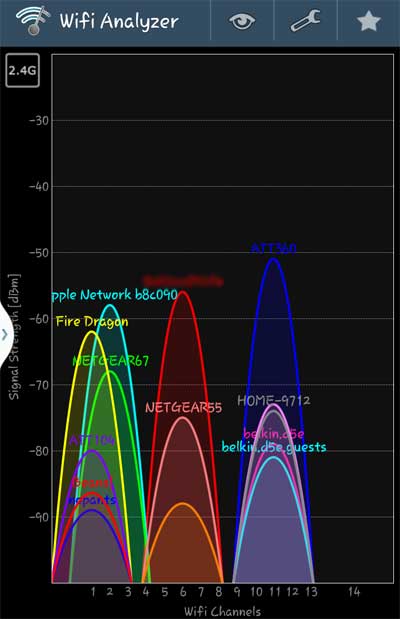

There are three methods of checking whether a modem is compatible with your ISP, although only one of them is foolproof. The company must also be willing to push out firmware updates on a regular basis, which is easier for some modems than for others. Cable companies run enormous networks, and they want to be 100 percent certain that a product is compatible before they authorize it for use. There's no hard-and-fast reason for this it's just the way it is. Big companies like Comcast and Cox support just about anything, but smaller networks may not.

Most modems are compatible with any cable company, but some aren't. The last thing you'll have to check is whether your modem is compatible with your ISP. That's fast, but you're not going to get a 50-gigabyte game or an enormous cache of photos in mere minutes.
#How to check wifi channel on modem download
You'll see descriptors like "up to 600 Mbps" completely devoid of context.Īlso, remember that "Mbps" means "megabits per second," not "megabytes per second." (Eight bits make a byte.) If you subscribe to a 50-Mbps plan, your maximum download speed will be somewhere in the neighborhood of 7 megabytes per second. Some of the most important things you can learn about a modem are its upload and download speeds - and yet, somehow, these always gets shoved about halfway down the page on a retailer's or manufacturer's website. Any new modem you buy should have at least 16 downstream channels anything less is probably either old or underpowered. Just remember that all other things being equal, higher numbers are better. Just about every modem provides many more downstream channels than upstream ones, because ISPs and end users alike are more concerned with downloading content than uploading it.ĭon't sweat this part too much, unless you want the absolute top-tier packages your cable company can provide. Roughly speaking, that correlates with how much download data your ISP can provide at any given time. The number before the "x" represents how many downstream channels the modem has. The good news is that it's simply a description of how many downstream and upstream channels a modem has. It's not at all clear what the average user is supposed to glean from this.

When you look at a modem, you'll often see a number somewhere in its description, which can be anything from 8 x 4 to 32 x 8. A decent DOCSIS 3.0 modem ranges from $50 to $80 DOCSIS 3.1 modems tend to fall between $150 and $199, though prices are coming down to the lower end of that range. Of course, this could change in the future, but by then, DOCSIS 3.1 modems will probably be cheaper.

But since the average broadband speed in the United States is somewhere in the neighborhood of only 66 Mbps, DOCSIS 3.0 will be fine for the vast majority of users. The bottom line is that if your ISP offers internet speeds of more than 1 gigabit (1,000 Mbps, or megabits per second), a DOCSIS 3.1 router is a better investment. The exact differences between them basically boil down to speed and the number of simultaneous channels. It just means that your modem can provide broadband internet access.ĭOCSIS 3.0 and 3.1 are just version numbers. DOCSIS stands for "Data Over Cable Service Interface Specification." It's the protocol that lets an ISP provide internet service through a coaxial cable.


 0 kommentar(er)
0 kommentar(er)
